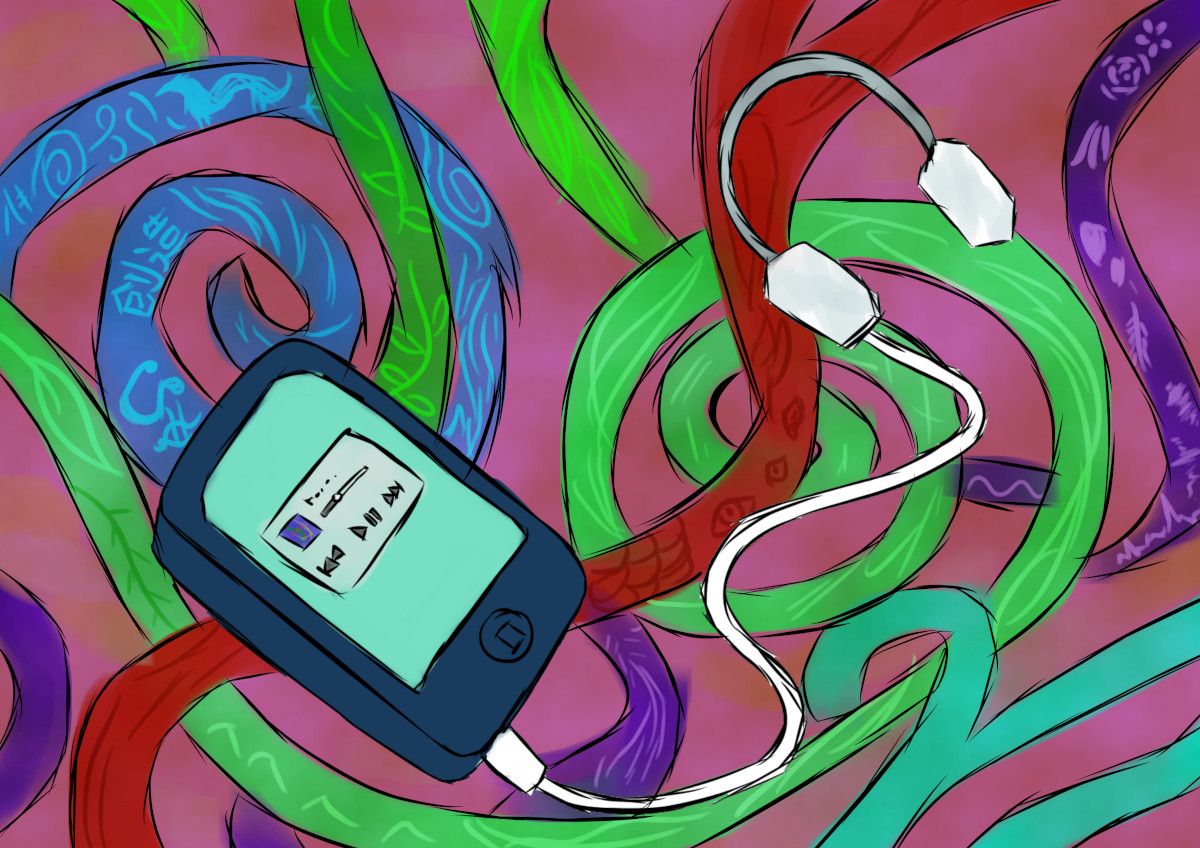Snipette - The Sight of Music
|
Older messages
State of Awe
Friday, July 29, 2022
Is it an innate response, or something we learn through culture? Or, perhaps a bit of both? Snipette Snipette State of Awe By Anirudh Kulkarni – 29 Jul 2022 – View online → Is it an innate response, or
Tomato Juice
Friday, July 22, 2022
Why does most airline food taste bad? And what doesn't? Snipette Snipette Tomato Juice By Abbey Thiel – 22 Jul 2022 – View online → Why does most airline food taste bad? And what doesn't?
Around Vacations
Friday, July 15, 2022
What comes in between work and play? Snipette Snipette Around Vacations By Chelsea Iversen – 15 Jul 2022 – View online → What comes in between work and play? Vacation is a wonderful thing. It gives you
Designer Babies
Friday, July 8, 2022
If you could, would you design your next baby with enhanced intellectual, sporting and artistic abilities? Snipette Snipette Designer Babies By Phillip Shirvington – 08 Jul 2022 – View online → If you
An Interstellar Visitor
Friday, July 1, 2022
Science offers the privilege of following evidence, not prejudice. Snipette Snipette An Interstellar Visitor By Avi Loeb – 01 Jul 2022 – View online → Science offers the privilege of following evidence
You Might Also Like
Convert more leads with your emails.
Wednesday, January 15, 2025
Expert insights on building lead nurture flows. ͏ ͏ ͏ ͏ ͏ ͏ ͏ ͏ ͏ ͏ ͏ ͏ ͏ ͏ ͏ ͏ ͏ ͏ ͏ ͏ ͏ ͏ ͏ ͏ ͏ ͏ ͏ ͏ ͏ ͏ ͏ ͏ ͏ ͏ ͏ ͏ ͏ ͏ ͏ ͏ ͏ ͏ ͏ ͏ ͏ ͏ ͏ ͏ ͏ ͏ ͏ ͏ ͏ ͏ ͏ ͏ ͏ ͏ ͏ ͏ ͏ ͏ ͏ ͏ ͏ ͏ ͏ ͏ ͏ ͏ ͏ ͏ ͏ ͏ ͏ ͏ ͏
Uber's service migration strategy circa 2014. @ Irrational Exuberance
Wednesday, January 15, 2025
Hi folks, This is the weekly digest for my blog, Irrational Exuberance. Reach out with thoughts on Twitter at @lethain, or reply to this email. Posts from this week: - Uber's service migration
The Polar Bear Prison
Wednesday, January 15, 2025
Maybe it's more of a re-educational camp?
• Book Series Promos for Authors • All in one order • Social Media • Blogs
Wednesday, January 15, 2025
~ Book Series Ads for Authors ~ All in One Order! SEE WHAT AUTHORS ARE SAYING ABOUT CONTENTMO ! BOOK SERIES PROMOTIONS by ContentMo We want to help you get your book series out on front of readers. Our
🤝 2 Truths Every Biz Buyer Should Know
Tuesday, January 14, 2025
Plus 1 Game-Changing Idea for SMB Acquisition Biz Buyers, Welcome to Main Street Minute — where we share some of the best ideas from inside our acquisitions community. Whether you're curious or
Artistic activism, the genetics of personality & archeological strategies
Tuesday, January 14, 2025
Your new Strategy Toolkit newsletter (January 14, 2024) ͏ ͏ ͏ ͏ ͏ ͏ ͏ ͏ ͏ ͏ ͏ ͏ ͏ ͏ ͏ ͏ ͏ ͏ ͏ ͏ ͏ ͏ ͏ ͏ ͏ ͏ ͏ ͏ ͏ ͏ ͏ ͏ ͏ ͏ ͏ ͏ ͏ ͏ ͏ ͏ ͏ ͏ ͏ ͏ ͏ ͏ ͏ ͏ ͏ ͏ ͏ ͏ ͏ ͏ ͏ ͏ ͏ ͏ ͏ ͏ ͏ ͏ ͏ ͏ ͏ ͏ ͏ ͏ ͏ ͏ ͏ ͏ ͏
Reminder: B2B Demand Generation in 2025
Tuesday, January 14, 2025
Webinar With Stefan and Tycho ͏ ͏ ͏ ͏ ͏ ͏ ͏ ͏ ͏ ͏ ͏ ͏ ͏ ͏ ͏ ͏ ͏ ͏ ͏ ͏ ͏ ͏ ͏ ͏ ͏ ͏ ͏ ͏ ͏ ͏ ͏ ͏ ͏ ͏ ͏ ͏ ͏ ͏ ͏ ͏ ͏ ͏ ͏ ͏ ͏ ͏ ͏ ͏ ͏ ͏ ͏ ͏ ͏ ͏ ͏ ͏ ͏ ͏ ͏ ͏ ͏ ͏ ͏ ͏ ͏ ͏ ͏ ͏ ͏ ͏ ͏ ͏ ͏ ͏ ͏ ͏ ͏ ͏ ͏ ͏ ͏ ͏ ͏ ͏ ͏ ͏
Why Some Types of Art Speak to You More Than Others
Tuesday, January 14, 2025
Your weekly 5-minute read with timeless ideas on art and creativity intersecting with business and life͏ ͏ ͏ ͏ ͏ ͏ ͏ ͏ ͏ ͏ ͏ ͏ ͏ ͏ ͏ ͏ ͏ ͏ ͏ ͏ ͏ ͏ ͏ ͏ ͏ ͏ ͏ ͏ ͏ ͏ ͏ ͏ ͏
How Chewbacca Roared a Woman into New Teeth
Tuesday, January 14, 2025
It started as a prank. A funny, and mostly harmless one -- annoying, sure, but most pranks are.
🧙♂️ [SNEAK PEEK] Stop giving brands what they ask for…
Tuesday, January 14, 2025
Why saying “no” could actually be your smartest move ͏ ͏ ͏ ͏ ͏ ͏ ͏ ͏ ͏ ͏ ͏ ͏ ͏ ͏ ͏ ͏ ͏ ͏ ͏ ͏ ͏ ͏ ͏ ͏ ͏ ͏ ͏ ͏ ͏ ͏ ͏ ͏ ͏ ͏ ͏ ͏ ͏ ͏ ͏ ͏ ͏ ͏ ͏ ͏ ͏ ͏ ͏ ͏ ͏ ͏ ͏ ͏ ͏ ͏ ͏ ͏ ͏ ͏ ͏ ͏ ͏ ͏ ͏ ͏ ͏ ͏ ͏ ͏ ͏ ͏ ͏ ͏ ͏ ͏
